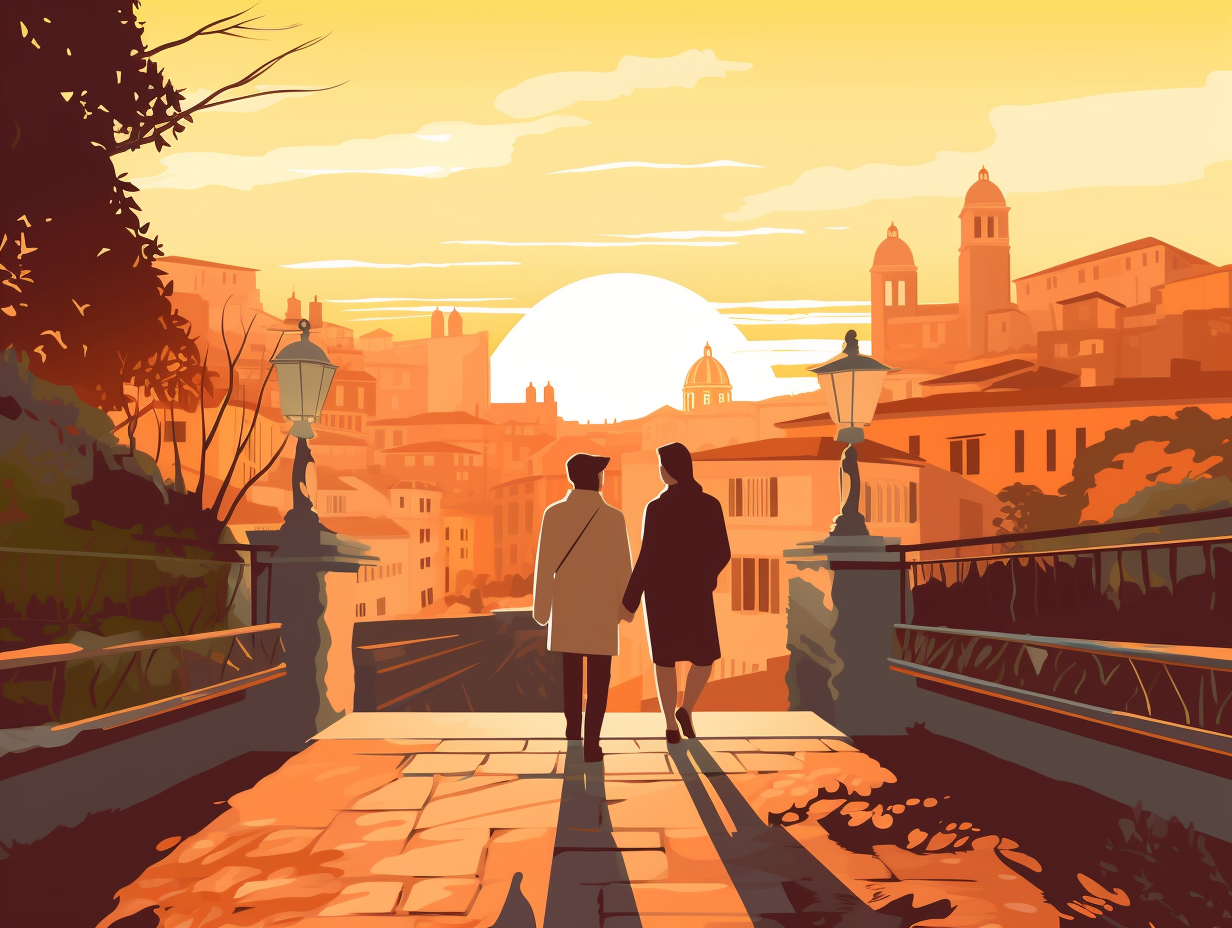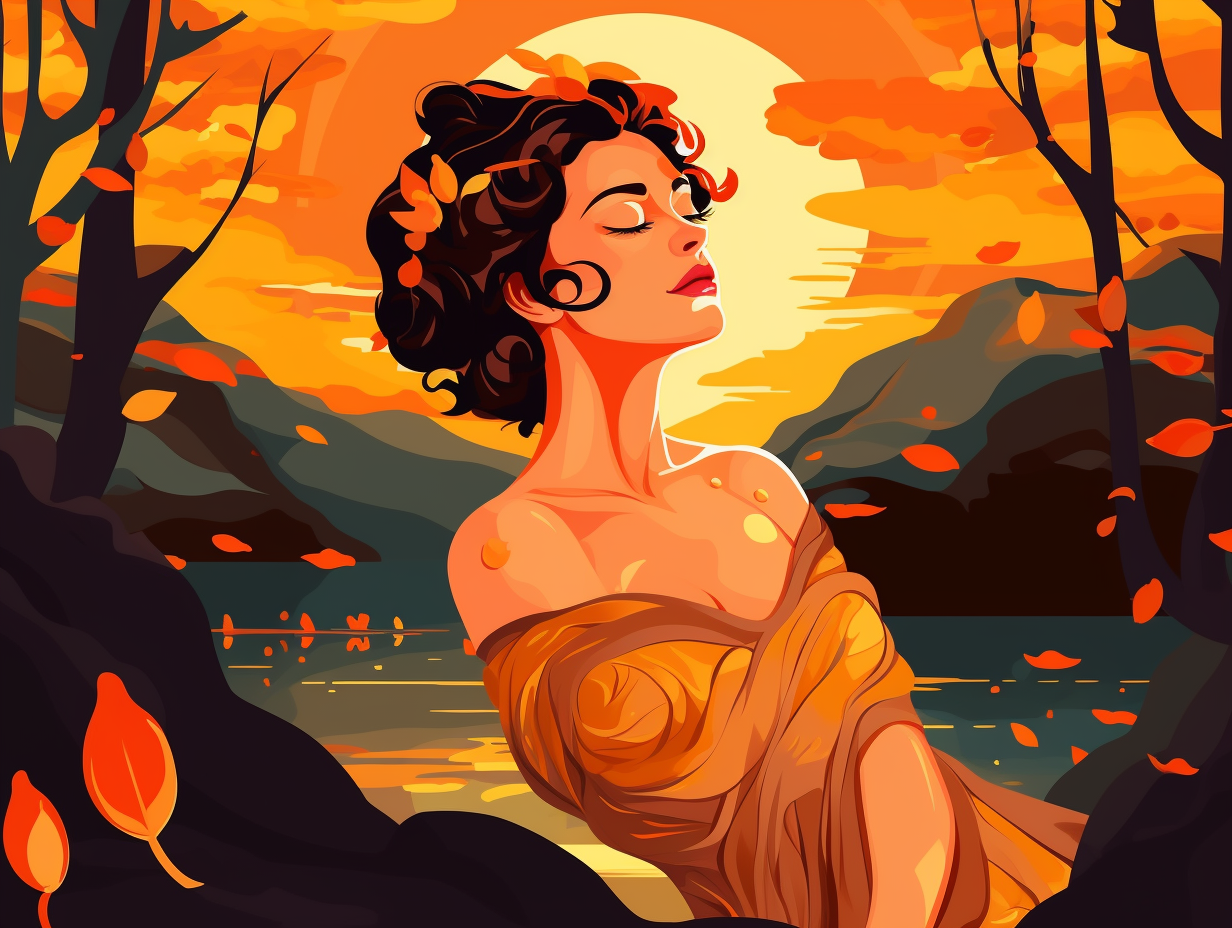21 Amazing Fun Facts About Rome: Uncover The Eternal City's Hidden Gems and Secret Stories

1. Trajan's Market: The Ancient Mall
Step aside, Mall of America: Trajan's Market in Rome was the ancient world's premier shopping destination! Not just the first mall in Rome, this multi-story commercial wonderland also boasted administrative offices, apartments, and even a library. Today, it's home to the Museum of Imperial Forums, where visitors can peruse all six levels while soaking up some history and, perhaps, the ghostly echoes of ancient retail therapy.
Source => rome.net
2. Vomitorium: Not a Binge-eating Chamber!
Feeling queasy about ancient Rome's party habits? Let's bust that myth with a 'heave' of relief: The vomitorium was not a Roman binge-eating detox chamber, but rather a genius architectural design in theaters and stadiums, allowing swift crowd entrance and exit, with its etymology stemming from the Latin for "place from which things spew forth." And, in a modern twist, the concept has been resurrected for steadfast entrances and exits at the Oregon Shakespeare Festival since the 1980s!
Source => simple.wikipedia.org

Did you know that the "pharaoh of sunscreen" Franz Greiter invented the sun-defending Glacier Cream in the 1930s, introducing the world to SPF and revolutionizing sun protection? Discover how this invention led to a multi-billion dollar industry! 🌞💡
=> Fun Facts about Egypt
3. Roman Toilet Paper: Sea Sponge on a Stick
Talk about a Roman sponge bath: the ancient Romans used sea sponges attached to sticks as communal toilet paper in their public restrooms. The common tool, known as a tersorium, was dipped into a gutter of flowing water beneath the benches to stay clean, but the shared practice potentially led to the spread of infectious diseases like intestinal worms.
Source => smithsonianmag.com
4. Roman Welfare: Free Grain and Bread
Talk about a loaf of bread being the best thing since sliced...well, bread: In ancient Rome, the government had a program called "Cura Annonae" which imported grain for its citizens, initially offering subsidized grain, and eventually providing free grain and bread to some needy adult male citizens.
Source => en.wikipedia.org

5. Rome's Barber Buzz
Hold on to your razors, folks: It was the Sicilian barber Ticinius Mena who single-handedly kickstarted the "shave and a haircut" craze back in 296 BC Rome, turning barbershops into the ultimate social hotspots for pampering and gossip, complete with haircuts, shaves, massages, manicures, and exclusive cosmetic products – while the crème de la crème of Roman society could even boast of having personal tonsors and hairdressers among their slaves!
Source => monumentbarbershop.com
6. Emperor Vespasian's Urine Tax
When life gives you lemons, the Romans made…urine-nade? In a wee-lly bizarre way, Ancient Romans had a pee-culiar fixation with liquid gold: Roman Emperor Vespasian didn't necessarily take urine as taxes, but he did tax trade in urine collected from public toilets! These "splash the pot" taxes funded grand projects, such as the famous Flavian Amphitheater—now known as the Colosseum.
Source => blog.education.nationalgeographic.org
7. Buzz Aldrin's Lunar Punch
Houston, we have a punchline: Buzz Aldrin, the second man on the moon, once socked a conspiracy theorist right in the kisser for accusing him of faking the lunar landing with NASA's help, proving that even astronauts have their limits when it comes to Earth-bound absurdities.
Source => history.com
8. Ancient Roman Wedding: Showered in Wheat
Before Cupid upgraded his bow and arrow to rice grains, ancient Romans were already showering newlyweds in a wheat way: In Rome, it was wheat, not rice or farro, that was traditionally thrown at weddings. This pre-Christian custom symbolized prosperity and fertility and has since evolved into various forms across different cultures, like Italians tossing candies or sugared nuts, the Polish sprinkling rice and coins, and Eastern India scattering flower petals.
Source => brides.com
9. Roman Marriages: Politics Over Love
Talk about a less than Roman-tic marriage: In ancient Rome, partnerships were more about economic and political alliances than love, with monogamous unions allowing only one spouse at a time and women having limited control over their property and decision-making.
Source => en.wikipedia.org

10. Risqué Roman Graffiti
We can confidently say that Romans were no stranger to the ancient art of "trolling": A treasure trove of risqué graffiti, found in the streets of Herculaneum and Pompeii, reveals that everyday citizens regularly dabbled in crude humor and raunchy tales involving bodily functions and sexual escapades, proving once again that human nature hasn't changed all that much over the centuries!
Source => kashgar.com.au
11. Rome's Superfast Messengers
Ever wonder how the Romans managed to be more punctual than your local pizza delivery? They had a well-oiled transport system to thank: Roman roads were so expertly constructed that messengers could race across the empire at breakneck speeds, clocking in at 200 miles a day by swapping horses every 10 miles, ensuring important news traveled faster than you can say "Hail, Caesar!"
Source => factsanddetails.com
12. Emperor Claudius: Clumsy but Smart
Don't judge an emperor by his wobble: Emperor Claudius of Rome may have been quite the clumsy fella, but his mind was sharper than a Roman gladius! With a side of law and a dash of history, he reigned strong for 13 years, conquered Britain, and even gave the imperial civil service a little makeover.
Source => ncbi.nlm.nih.gov
13. Triclinia: Extravagant Roman Party Rooms
If you thought a Netflix and Chill session could get wild, let me introduce you to the ancient Romans and their Triclinia party aces: Wealthy homeowners in ancient Rome had dedicated dining rooms called Triclinia, where poets, dancers, and performers entertained guests while they dined, amidst lavish décor and burning lamp oil as a symbol of status. Time to scramble for invitations!
Source => unrv.com
14. Romans Ate Stuffed Dormice
In a Roman epicurean twist of "Honey, I Shrunk the Kids," they played "Honey, We Ate the Rodents": Ancient Romans used to chow down on stuffed dormice – small rodents fattened with other meats and dipped in honey – as a luxurious delicacy, showcasing their wealth and indulgent tastes at lavish dinner parties.
Source => owlcation.com

15. Thermopolia: Ancient Roman Fast Food
Before McDonald's and Starbucks conquered the world with a one-two punch of coffee and fast food, Ancient Rome had their own conglomerate of culinary pit stops that served up meals for the average toga-wearing citizen who craved a speedy bite: In the olden days of Rome, thermopolia were the fast-food joints where people could grab hot foods and drinks like spiced wine, meats, cheese, fish, lentils, nuts, and even fish-gut sauce, garum. With over 80 of these establishments unearthed in the ruins of Pompeii, dedicated to on-the-go eating and a little rendezvous with vices, even Emperor Claudius stepped in to close them down and curb some criminal activities.
Source => smithsonianmag.com
16. Festival of Hilaria: Roman Comedy Party
Move over, April Fool's Day: There's an ancient Roman shindig that would have had you rolling in the (toga) aisles! Rejoice, for the festival of Hilaria - celebrated on 3rd November - was dedicated to belly laughs, playful performances, and tickling tuneful treats: In honor of the goddess Isis, Romans got their funny bones tickled at the closing ceremony of Parentalia, a three-day-long ancestral appreciation affair, where Hilaria's humorous happenings brought the chuckles of the past to life.
Source => medium.com
17. Roman Owls: Feathered Fortune Tellers
Whoever said "night owl" clearly didn't get the memo on these flappy-feathered fortune-tellers: In ancient Rome, owls were revered, associated with the goddess Athena, and seen as symbols of wisdom and protection - to the point that they believed placing an owl feather under a sleeping person's pillow could reveal their secrets and dreams.
Source => exemplore.com
18. Trevi Fountain: Coin Wishes Turn to Charity
They say every coin has two sides, but in Rome, every coin has two wishes: one for the tosser and one for charity. Here's the flip side: One million euros worth of coins are tossed into the Trevi Fountain annually, and up to 3,000 euros are collected daily. Instead of making the fountain a fortune teller, Caritas Roma, a Catholic charity, catches the watery piggybank to aid Rome's needy citizens.
Source => tripadvisor.com
19. Bulla: Roman Wardrobe Against Bad Luck
Before swanky gold chains and ostentatious bling were all the rage, the fashionable young Roman had another must-have accessory to stay safe from bad juju: a bulla, that is. If you’re still scratching your head: a bulla is a protective amulet that was given to male children, right on the ninth day after their birth. These stylish trinkets were typically crafted from lead, decked out in gold foil for the ritzy crowd, and worn around the neck until they put on their big boy toga – the toga virilis. Of course, gold wasn't for everyone – the less well-off rocked leather and cloth varieties.
Source => en.wikipedia.org
20. Ptolemy's Exotic Animal Parade
Before giraffes were busy sticking their necks out for Internet fame, they were the stars of the ancient Roman catwalk: Ptolemy II introduced the first giraffe to Europe during a massive parade at the Ptolemaieia festival in 279 BC, complete with chariots led by exotic creatures and a fashionable entourage of leopards, panthers, and lynxes - all strutting their spots in the name of dynastic pride.
Source => penelope.uchicago.edu
21. Lectus: Rome's Transformer Bed
Imagine if your bed was a Transformer, constantly changing roles from hangout spot to sleepy haven, party zone to scholarly nook: That was the Roman "lectus," a multitasking MVP of ancient furniture, which boasted a wooden frame, leather straps to hold a cozy mattress, and coverings almost as blingy as a rapper's wardrobe. This versatile couch-bed was as likely to pop up in a posh dining room as it would in a bedroom, library, or living area, with the option of a built-in floor support for those eager to keep things minimalistic.
Source => furniturestyles.net
Related Fun Facts




















